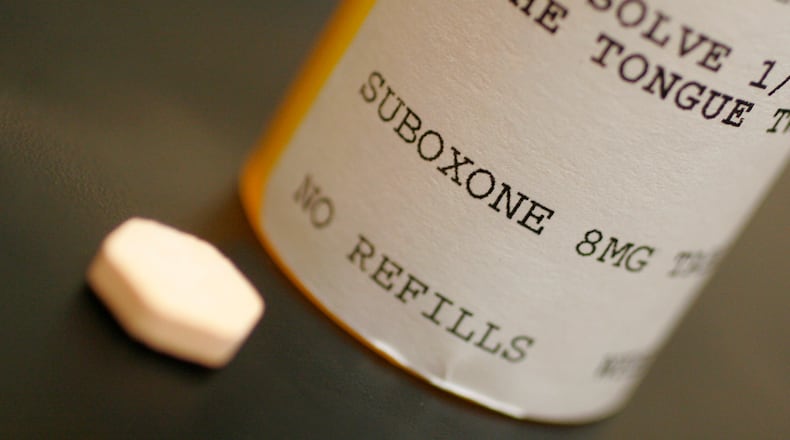For years, most physicians needed to get an additional eight hours of training and a special allowance to prescribe the medication.
The Trump administration in its final weeks had nixed the extra training requirements. The Biden administration however rescinded the changes and said the new guidelines were made prematurely and needed examined further.
Now, after a policy review, new guidelines announced Tuesday by the Biden administration mean doctors and other health workers will no longer need extra hours of training to prescribe buprenorphine, a gold standard medicine that helps with cravings. And they no longer have to refer patients to counseling services.
The move is more expansive the the Trump proposal, which would have only applied to doctors and not other prescribers.
Under the loosened guidelines, prescribers will be able to treat up to 30 patients at a time with the drug. It comes in a pill or film that dissolves under the tongue. It costs about $100 a month.
Because of how opioids act on the brain, people dependent on them get sick if they stop using. Withdrawal can feel like a bad flu with cramping, sweating, anxiety and sleeplessness. Cravings for the drug can be so intense that relapse is common.
Buprenorphine helps by moving a patient from powerful painkillers or an illicit opioid like heroin to a regular dose of a legal opioid-based medication.
Besides doctors, nurse practitioners, physician assistants, certified nurse midwives and some other types of nurses will be able to prescribe buprenorphine without first getting special training.
“What it does is provide more on-ramps to treatment,” said Brendan Saloner, an addiction researcher at Johns Hopkins Bloomberg School of Public Health. “This will help in health centers, hospitals, jails and prisons — places where these folks sometimes show up for treatment.”
Stricter requirements will remain for prescribers who want to treat more than 30 patients at a time.
The prescribing requirements date back to legislation in 2000 meant to prevent too-easy access to a medicine with its own potential for misuse. But only a small number of doctors went through the steps and, in many parts of the country, patients couldn’t find a prescriber. Ironically, doctors could prescribe buprenorphine for pain without the extra training.
The loosened regulations were championed by some local leaders including U.S. Rep. Mike Turner, who held a press conference in March in support of the Mainstreaming Addiction Treatment Act, which he helped introduce and also would have removed the training requirements for buprenorphine prescribing.
“This decision delivers hope to countless Americans struggling to overcome addiction during a time when opioid deaths continue to skyrocket,” Turner said in a statement Tuesday. “I’m thankful for the efforts of my bipartisan allies in Congress and those fighting the opioid crisis who have joined me in leading the charge to successfully change this policy.”
The Dayton Daily News previously reported some other doctors have said that the training is needed and in demand, because one of the major barriers to buprenorphine access is provider knowledge and comfort with managing the treatment.
In Montgomery County, in 2017, 566 people died from accidental overdoses, mostly fueled by opiates. So far, preliminary data indicates 319 people in the county died from accidental overdoses in 2020, compared to 288 deaths in 2019. For 2021, 98 people have died so far from accidental overdoses according to preliminary data.
The Associated Press contributed to this article.

